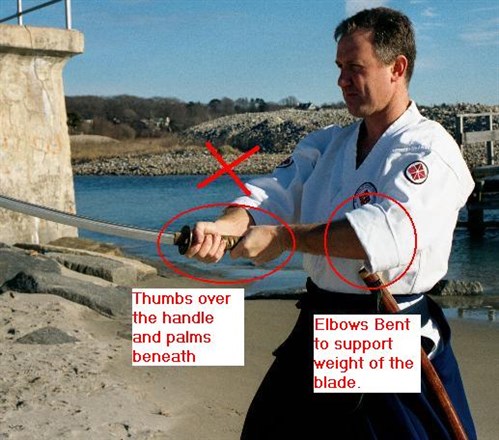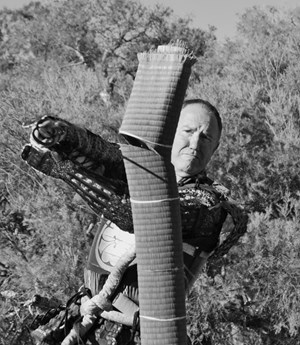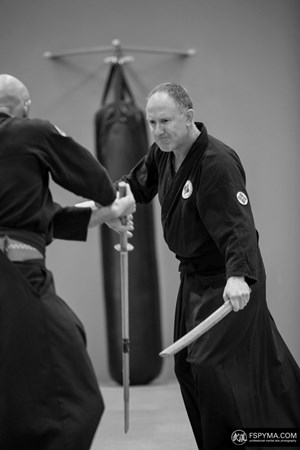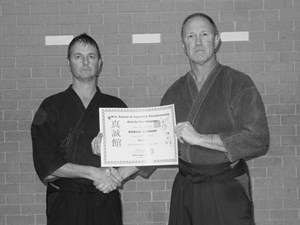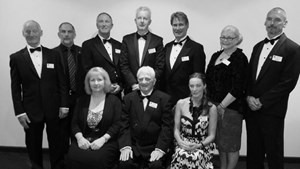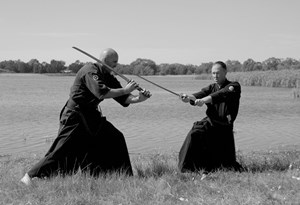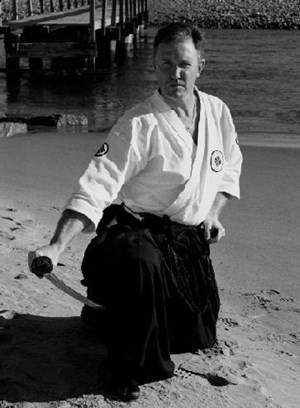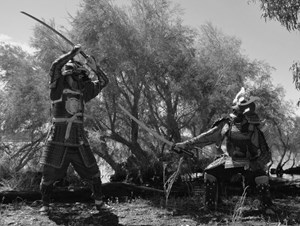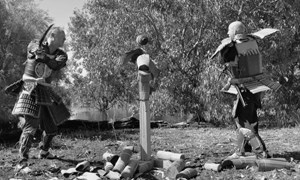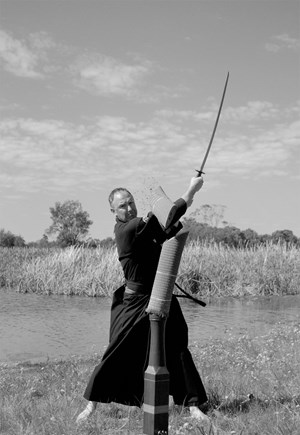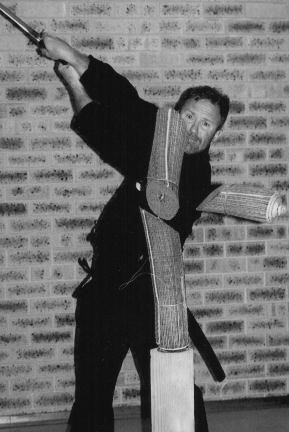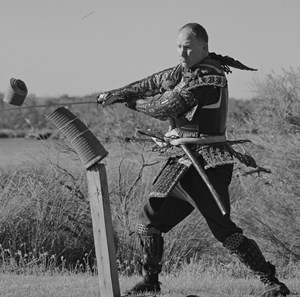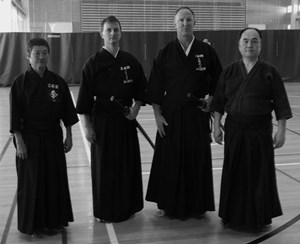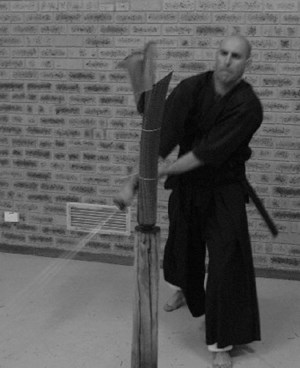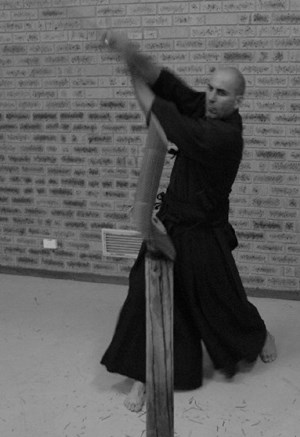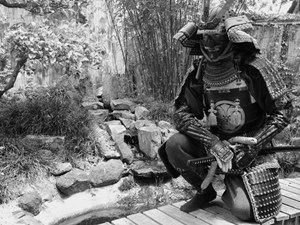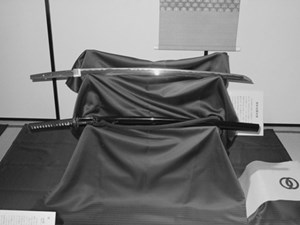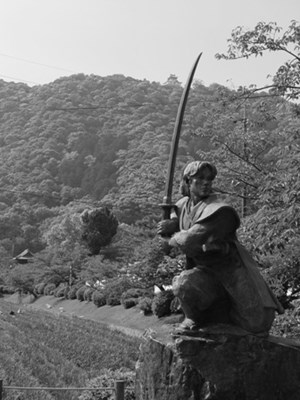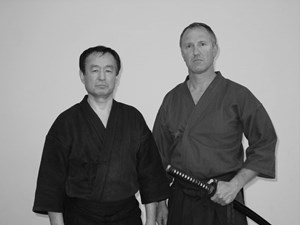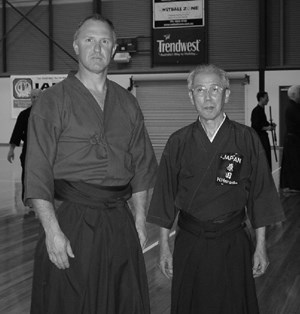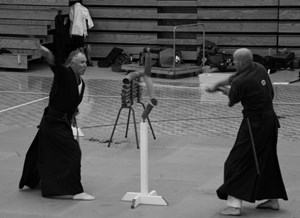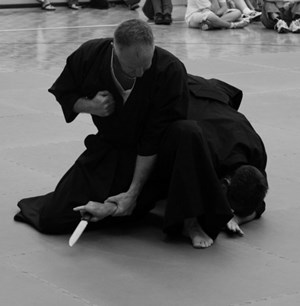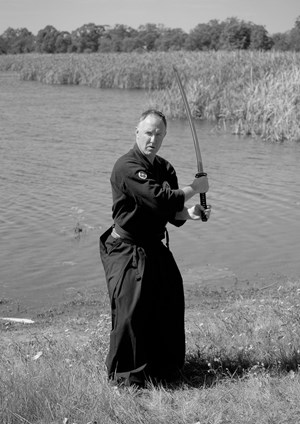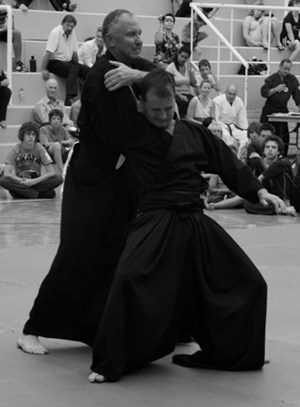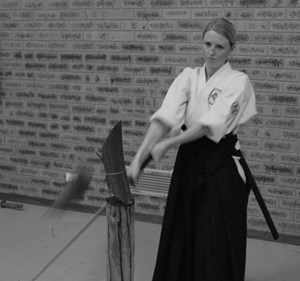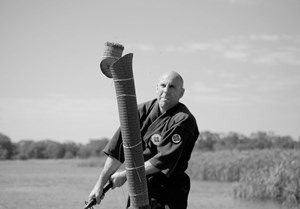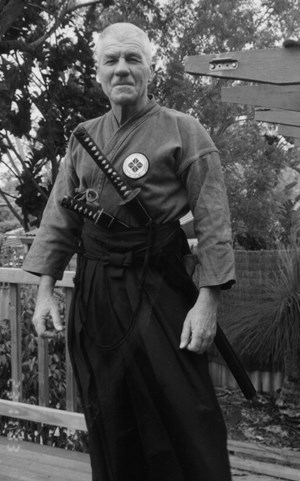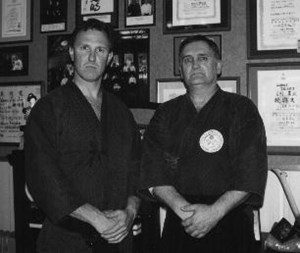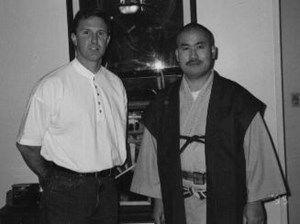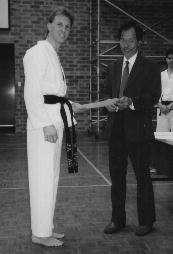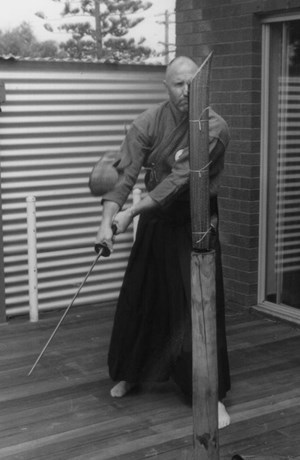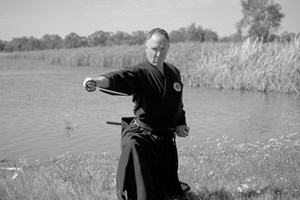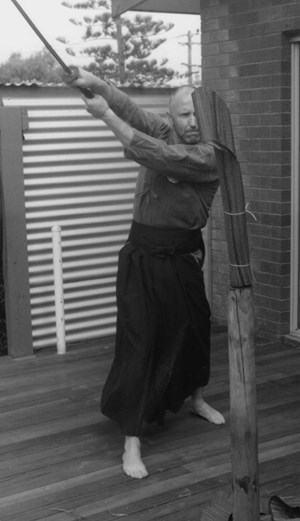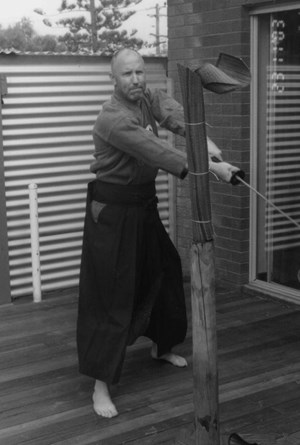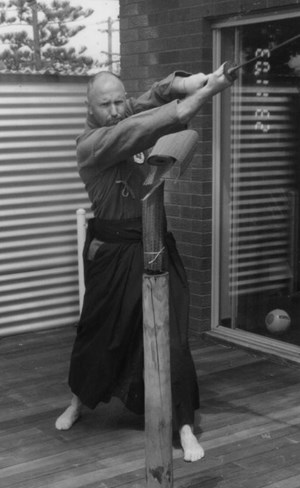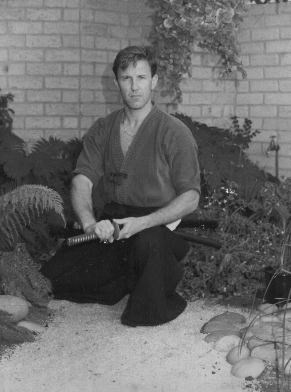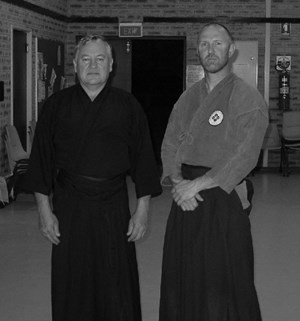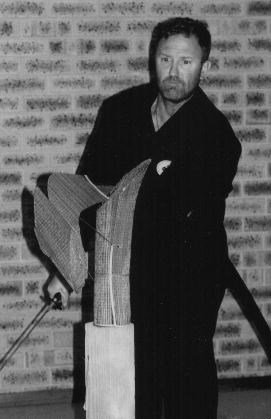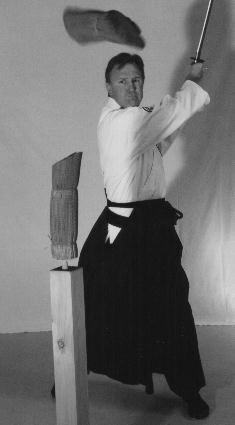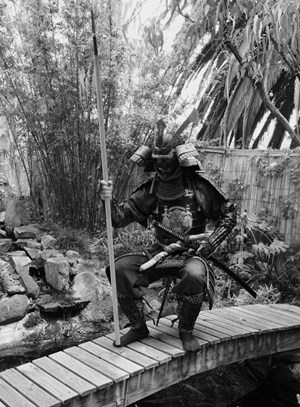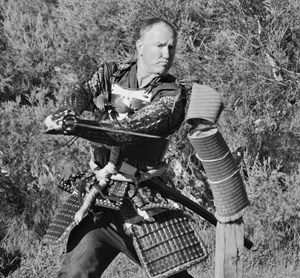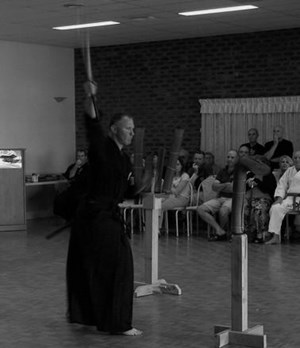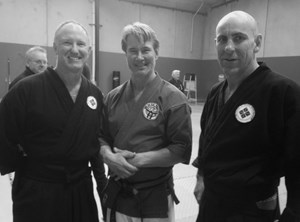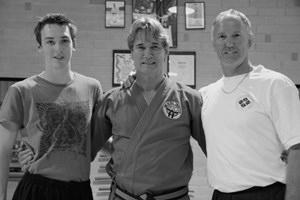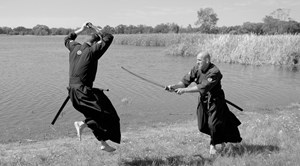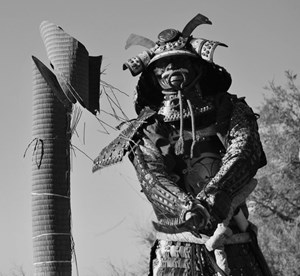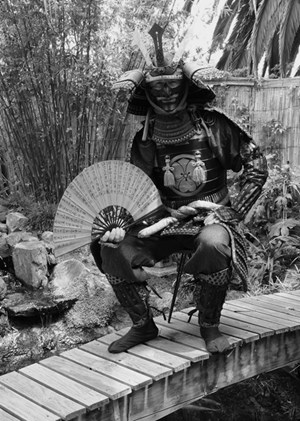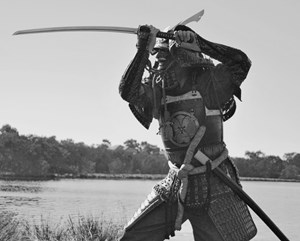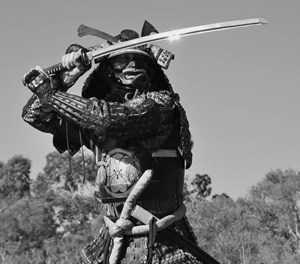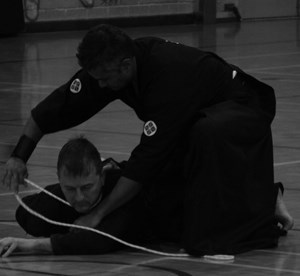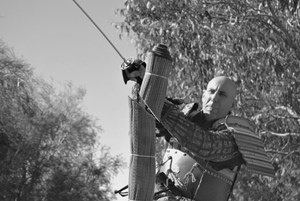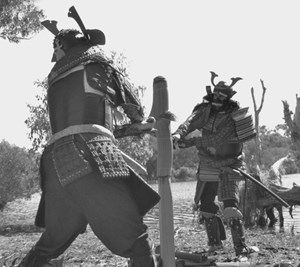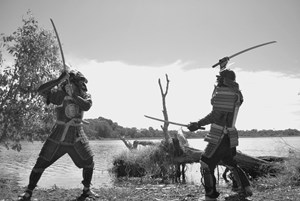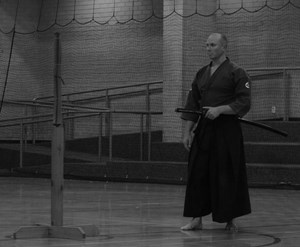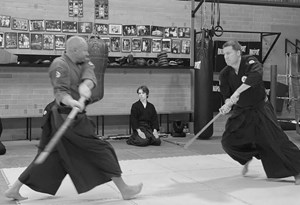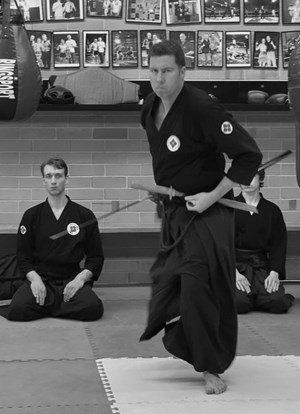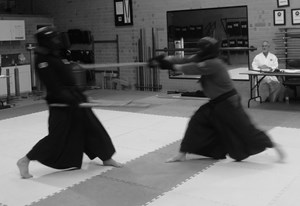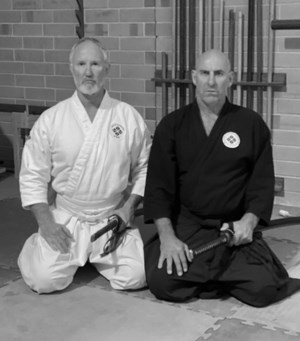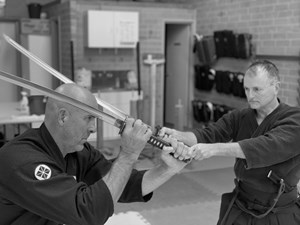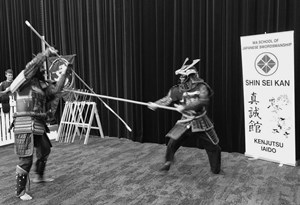Correct Grip
Correctly gripping the sword is as important to swordsmanship as forming a correct fist is for punching in boxing or karate. Gripping the sword is so important that, if not learned correctly, all other aspects of the sword will never be performed correctly. Through suburi and solo practice, many students build a misunderstanding of the actual purpose of the cutting action in preference to the result they feel they need to achieve in power and speed. This ultimately causes the grip to be practiced incorrectly, a mistake that is very hard to correct later.
Correct grip has many benefits for the swordsman including:
- Distributing impact up through the arms for either cutting or blocking (and not through the thumbs)
- Aligning the blade with the arms and body for correct cutting angles
- Stopping the blade from continuing beyond a safe cutting arc
- Minimizing the exposure of the wrists to your opponent
- Maintaining a strong and straight wrist throughout all techniques
- Allowing the swordsman to gain maximum distance at the correct point of the cut, and therefore, maximum power.
If done correctly at all times, it serves as the most effective
way to cut and as a fail safe mechanism for the swordsman. With a
correct grip the swordsman doesn't need to think about cutting
angles or the safety of themselves under a variety of
situations.
There is only one way to grip the weapon correctly no matter what
cut is being preformed.
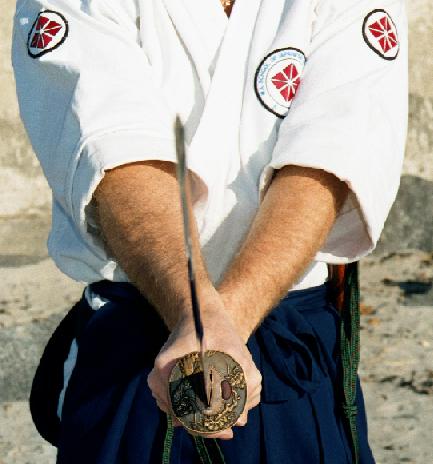
In solo practice and suburi (especially with a suburito) students allow their hands to shift; the emphasis becomes stopping the swords at the end of it's arc rather than using the correct grip at the beginning of it's arc. Without a target, the meaning of the action can be misinterpreted. The purpose of any of these exercises is correct cutting, sometimes this fact is lost in sweat and heavy breathing. As practitioners get tired, their hands can rotate until the palms are beneath the handle holding up the sword rather than being behind the blade to perform the cut. This bad habit has an additional negative effect; it causes students to bend their arms to further support the thumbs and hands from the swords weight throughout the arc of the cut. This is clearly wrong. If left uncorrected students transitioning to tameshigiri find they are unable to cut. Most beginner students are much more comfortable with hitting an object rather than cutting an object. This pre learning interferes with correct technique. Instructors and students alike must be aware of this likely reaction to training and take steps to address it early.
For most students it is the left hand at the kashira that
presents the biggest problem in terms of correct grip and
maintaining a strong straight wrist. It takes practice and
diligence to be able to grip the weapon correctly and without
thought every time. Before students can be allowed to perform
tameshigiri, the grip must be ingrained; there is little margin for
error when using a live blade.
The correct sword grip is not automatically natural to new
students. To emphasize the point, students are asked to perform
jodan giri with only the right arm and then only the left. Even
single handed, the correct grip allows some control, the incorrect
grip provides no control. Therefore, the two correct grips come
together to form the correct way of holding the sword. The handle
is gripped by the three fingers starting with the 'pinky and not
gripped by the thumb or index finger. Using a correct grip the
sword can be maneuvered in every direction with the thumb and index
finger extended (not that you would choose to). If a student is
able to do this, it is another indicator of good grip.
Gripping the blade correctly is the foundation of good sword work, being aware of the likely pitfalls and addressing them early is essential. Too much learning pivots on a good sword grip for it to be taken for granted. Be diligent in training, and understand what is right and
